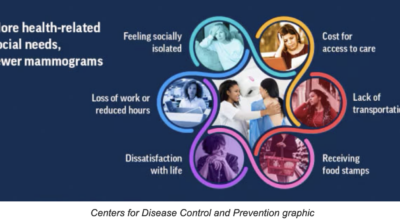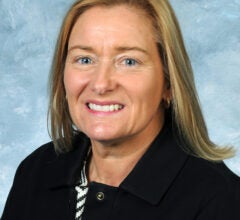Mind and Body: Pool safety and responsibilities
Published 10:22 am Monday, June 4, 2018
By Jim McCowan
Clark County Environmentalist
Because it hardly seems possible for another pool season to have resurfaced so soon (has it really been a year?), the temptation to ignore an annual review of water and pool safety recommendations is great.
But a brochure published by The Association of Pool and Spa Professionals (APSP), titled “Children Aren’t Waterproof,” provides a great reminder about our recreational responsibilities, especially when they involve pools, spas, and hot tubs.
This reminder takes on greater significance since the APSP identifies drowning as “one of the largest causes of accidental death for American infants and children under the age of five.”
Though many of the suggestions they offer could be considered commonsense, they still bear repeating, since as Voltaire put it, “Common sense is not so common.”
Therefore, the safety tips they list for supervising children around a pool, spa or hot tub include the following:
— Never leave a child alone, or out of your eyesight; not even for a second.
— Limit the access to a facility by locking doors and gates whenever swimming or soaking cannot be supervised.
— Do not permit anyone to use a pool or spa if a suction outlet fitting is missing, broken or loose. Adults as well as children may get entrapped.
— Never permit anyone to play or swim near suction fittings (drains and skimmer equalizer lines). A person’s body or hair may get trapped, causing permanent injury or drowning.
— Keep toys, particularly tricycles or wheel toys, away from the pool, spa or hot tub. It is too easy for a child playing with these to accidentally fall into the water.
— Do not allow anyone to engage in extended breath-holding activities underwater. This could create a condition called hypoxic blackout, in which an underwater swimmer essentially faints and drowns.
— Do not allow anyone of any age to swim without a “spotter” nearby. In fact, Kentucky regulations for commercial pools and bathing facilities forbid anyone to swim alone.
The APSP also denotes several tips for pool, spa and hot tub owners and operators.
— Completely surround your facility with a fence, wall or natural barrier. All gates or doors leading to the pool area should have a self-closing, self-latching mechanism.
— Make sure enclosures and barriers surrounding the facility comply with the Kentucky Building Code. Included in this code is the requirement for fences (for more than one to two family residences) to be at least 4-foot high and latches at least four feet above the ground. The APSP recommends inside latches be at least 54 inches high.
Kentucky Building Code also requires any spacing in the fence be small enough to prevent a four-inch diameter ball from passing through.
— Never allow anyone to swim or use a pool or spa that has a broken or missing drain cover. Repair it immediately.
In fact, federal law requires owners and operators to have Virginia Graeme Baker Act-compliant coverings for main drains and skimmer equalizer lines in all commercial facilities.
In certain cases, a safety vacuum release system is required to be installed on the pump. This is an emergency sensor that shuts off the pump if a drain is blocked.
— Do not allow objects (such as chairs or tables) to be placed near a facility fence or barrier, which could allow children to climb over it.
— Remove any vegetation or any other obstacles that might obstruct a clear view of the pool, spa or hot tub.
— Carefully read and follow the manufacturer’s directions for the safe installation, use and maintenance of any cover. Always completely remove the cover before using your facility. This will avoid the possibility of anyone, especially a small child, from being trapped and drowning under it.
— Drain any standing water from the surface of your cover. Infants and small children can drown in even the smallest amounts of water.
— Be especially alert to the potential for drowning accidents if you use a lightweight, floating pool cover. They are not designed for safety and no one should ever try to crawl or walk on them.
The APSP brochure stresses, whether parent, pool owner or operator, adults, are responsible for enforcing the rules of safety. Because children learn better when they observe the behavior being taught, it is up to us to set the example for water safety.
More information about water safety and drowning prevention can be found at the following websites: www.APSP.org, www.PoolSafely.gov, and www.CDC.gov/healthywater/swimming. For any questions, contact Jim Cowan at the Clark County Health Department Environmental Office at 859-385-4453 or jamesm.cowan@ky.gov.





